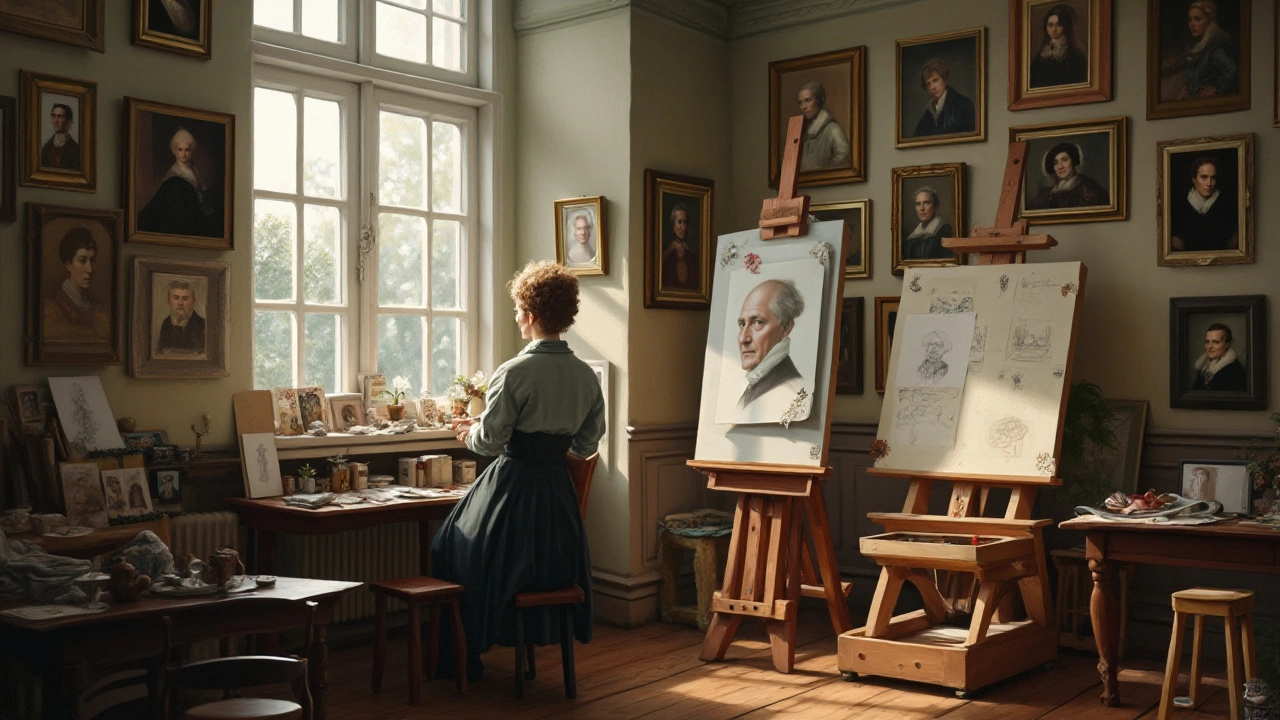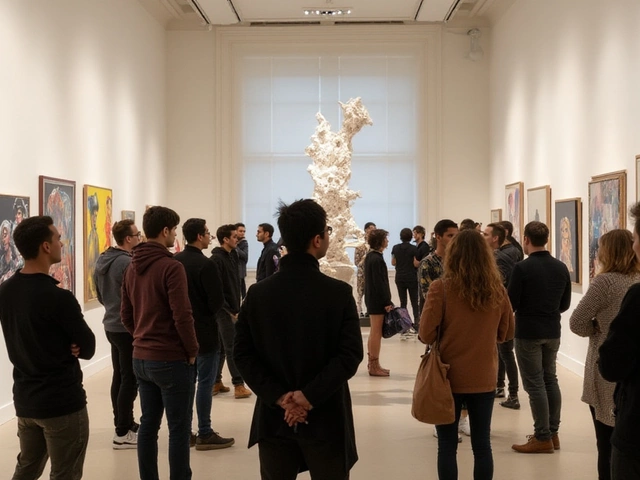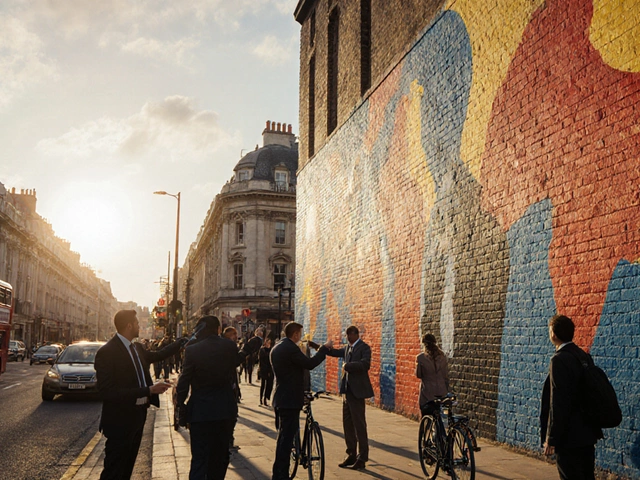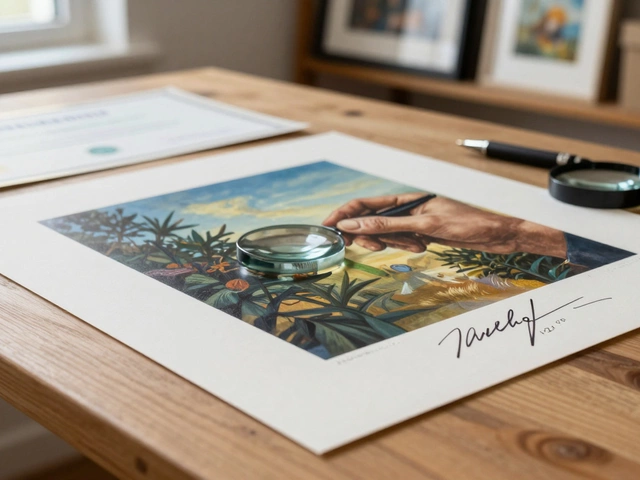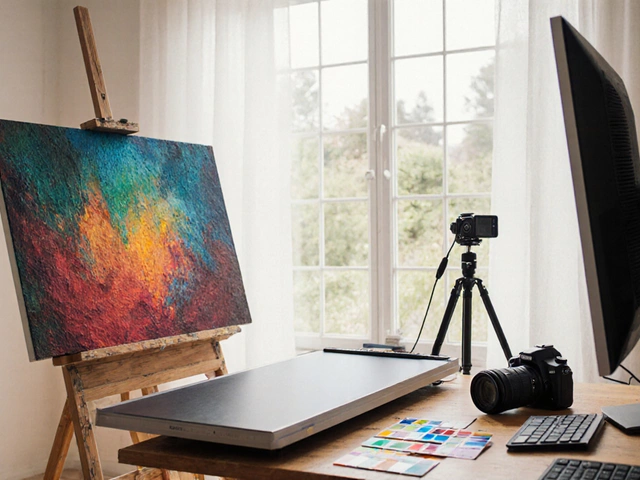Portrait art might seem like a daunting endeavor, with its rich history and technical demands. But fear not; every accomplished portrait artist began exactly where you stand today – with curiosity and a blank canvas. Let this be an exploration, a delightful foray into capturing the essence of humanity through strokes and pigments.
Your path involves learning about those who came before, understanding the tools that suit your fingers, and embracing the intricacies of human form. We'll walk through the essentials, from picking up your first brush to nurturing your artistic voice. After all, the world doesn't need another old master imitation; it needs your authentic expression. So, prepare your easel, and let’s translate mere visage into art.
- The Historical Context of Portraiture
- Essential Materials for Beginners
- Understanding Human Anatomy
- Developing Your Unique Style
- Overcoming Common Challenges
The Historical Context of Portraiture
The history of portrait art is as rich and varied as the history of human civilization itself. From the time of the Egyptians, who believed that portraits could preserve the soul, to contemporary times, portraiture has served as a crucial mode of capturing and communicating the essence of individuals.
Ancient Beginnings
Portraits have been around for thousands of years, with some of the earliest known examples originating from ancient Egypt. The pharaohs were frequently depicted to project their divine connection and maintain their eternal presence. In classical Greece and Rome, portrait sculpture evolved significantly, characterized by a high degree of realism and detailed likenesses of notable figures.
The Renaissance Revolution
The Renaissance era marked a turning point in portraiture, with the emergence of oil painting allowing for greater detail and realism. Artists like da Vinci, Michelangelo, and Titian brought intricate detail and lifelike representations that had not been possible before. As German painter Albrecht Dürer put it:
"Truly art lies hidden within nature; he who can wrest it from her, has it."
This period saw patrons commissioning works to showcase their wealth, status, and individuality, which spurred tremendous innovation in portrait art.
Changing Perspectives During the Enlightenment
As Enlightenment ideas spread across Europe, portrait art reflected a growing interest in science and reason. Artists began to portray their subjects with a focus on psychological depth and individual character. Consider the works of artists like Gainsborough and the quirky realism of Rembrandt, who captured the soul of the sitter, pushing beyond mere physical appearance.
Modern Transformations
The advent of photography in the 19th century initially posed a challenge to traditional painting. However, rather than fall into obscurity, portrait painting adapted and evolved. Artists like Picasso and Modigliani introduced abstract elements, reflecting the changing perceptions of identity and self-representation.
Today, portrait artists continue to blend myriad styles, mediums, and techniques, drawing from a rich historical background to inform and enrich their own creative processes. Understanding this historical tapestry provides an invaluable foundation as you embark on your journey into portrait art.
Essential Materials for Beginners
Diving into the world of portrait art demands more than passion; it requires the right tools. Knowing which materials to choose can make a huge difference in your artistic output and comfort as a beginner. While the market is flooded with an overwhelming array of supplies, let's break it down to fundamentals that will set you off on the right foot.
Choosing the Right Canvas
Your canvas is the foundation of your portrait, so selecting the right one is paramount. For beginners, a pre-stretched canvas is often the best choice. It’s ready to use and comes in a variety of sizes, allowing you to experiment without the hassle of setting it up yourself. Cotton canvases are budget-friendly and serve well for learning basic techniques.
Paints: Oil vs Acrylic
The age-old debate between oil and acrylic paints often leaves newcomers in a quandary. Acrylic paints are recommended for beginners due to their quick drying time, which allows for rapid experimentation. They are also water-soluble, making cleanup easier. On the other hand, oil paints offer a classic finish and longer drying times, which is forgiving for those wanting to make adjustments. Choose your medium based on your patience level and desired finish.
The Brush Selection
Investing in a variety of brushes will enable you to explore different strokes and textures. Here’s what you might need:
- Round Brushes: Perfect for detailing and fine lines.
- Flat Brushes: Ideal for bold strokes and filling large areas.
- Filbert Brushes: Versatile and great for blending.
Natural hair brushes often provide better control and finish, whereas synthetic ones are more economical and easier to clean. A set that mixes both types can offer you the best of both worlds.
Importance of a Good Palette
A palette is where your creative concoctions come to life. Opt for a flat, non-porous surface like glass or a disposable palette pad. This ensures easy mixing and cleaning. Also, consider a palette with a thumb hole for easier handling while painting.
Additional Tools
Beyond the basic essentials, the right tools can elevate your art. A good easel provides the stability needed for painting comfortably, and a palette knife can help in mixing paints or adding texture. Do not overlook the significance of quality varnishes to protect your masterpiece once it's finished.
Budget Considerations
Starting as a beginner doesn't mean you need to break the bank. Many art stores offer student-grade materials that are both affordable and decent in quality. As you grow in confidence and skills, you can gradually invest in more professional-grade supplies.
Here’s a quick look at estimated costs for essential materials for beginner portrait artists in 2025:
| Material | Estimated Cost (CAD) |
|---|---|
| Pre-stretched Cotton Canvas | $10 - $25 |
| Acrylic Paint Set | $20 - $50 |
| Brush Set | $15 - $40 |
| Palette | $10 - $30 |
With these essentials in place, you're well-equipped to begin your journey into portrait painting. Remember, as much as materials matter, it's your vision and creativity that will truly bring your portraits to life.
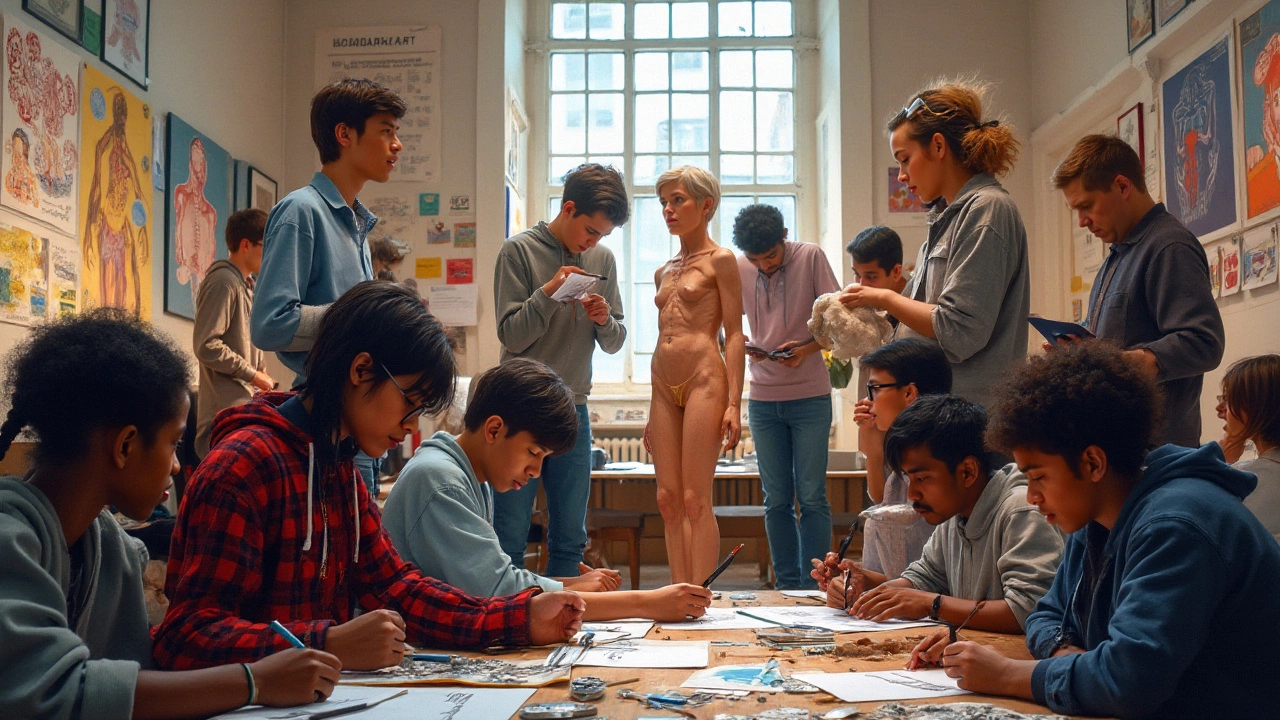
Understanding Human Anatomy
To truly excel in portrait art, one must be intimately familiar with the structure of the human form. It’s not merely about replicating features but understanding what lies beneath that brings a portrait to life. Grasping the intricacies of muscles, bones, and bodily proportions will enhance your ability to capture likeness and express emotion.
The Skeletal Foundation
Think of the skeleton as the framework upon which everything else is built. The skull is particularly crucial in portrait painting. Familiarize yourself with its planes and protrusions, such as the brow ridge, cheekbones, and jawline. These features define the face's underlying structure and dramatically affect how light and shadow play across the skin.
Muscles and Facial Expression
The muscles of the face, some of the smallest in the body, are responsible for our varied expressions. For instance, the orbicularis oculi enables us to smile, crinkle our eyes, and convey warmth. Understanding these minuscule shifts can be the difference between a flat representation and a dynamic, expressive portrait.
Key Muscles to Know
- Orbicularis Oris: Surrounds the mouth; crucial for expressions involving lips.
- Zygomaticus Major: Pulls the mouth's corners upwards; vital in smiling.
- Frontalis: Linked to raising eyebrows, significant in expressions of surprise or concern.
By learning how these muscles affect the skin’s surface, an artist can convey subtle emotional cues and nuances that make a portrait unique.
Proportions and Symmetry
Perfect symmetry is rare, often reserved for idealized or abstract portrayals. Yet, understanding typical human proportions can guide your painting. For example, the average human head is about five eyes wide, and the eyes are situated approximately halfway down the face. Familiarizing yourself with these guides can help prevent common errors, such as misaligned features or disproportional representations.
Nurturing Observation Skills
As you enhance your knowledge of human anatomy, practice remains key. Spend time sketching live subjects or using reference images. Examine the way muscles and bones influence one another in diverse lighting conditions or expressions. By consistently honing your observational skills, your journey into portrait art will become richer, resulting in paintings that resonate with life and authenticity.
Developing Your Unique Style
Embarking on the journey to develop your own unique style in portrait art can feel like a labyrinth, with influences from every direction and no clear path forward. However, the very elements that make this quest complex also render it exciting and deeply personal.
Explore Various Techniques
Start by immersing yourself in different techniques. From classical realism to modern expressionism, each style offers its own set of techniques that can add to your repertoire. Attend workshops, watch demonstrations, or engage with online platforms showcasing diverse styles—including digital methods. By practicing these varied techniques, you can borrow elements that resonate with you, eventually integrating them into your own artistic vocabulary.
Study Masters but Don’t Imitate
While it's crucial to study the old masters—such as Rembrandt's chiaroscuro or Frida Kahlo’s vivid color palette—it's also vital to avoid mere imitation. Use their work as a stepping stone to understand composition, lighting, and emotion. Take what inspires you, but always ask: how can I reinterpret this in my own way?
Embrace Experimentation
Experimentation is at the heart of starting portrait painting. Don’t hesitate to mix mediums; combine acrylic with charcoal, or pen with watercolor. Create art using unconventional tools—your fingers, a sponge, or anything that leaves an impression. Document these experiments to reflect on what aligns with your intended expression.
Feedback and Iteration
Seek constructive feedback from peers, mentors, or art communities. Platforms like DeviantArt or local art clubs can be great places to share your work and gain insights. Take suggestions seriously, but remember that your vision is the ultimate guide.
- Regularly update your portfolio to track progress.
- Keep a journal of your artistic journey, noting significant influences, experiments, and reflections.
- Set periodic reviews of your work to reassess and redefine your style.
Consider creating a mood board—digital or physical—that incorporates elements that captivate you. These could be snapshots, color swatches, or doodles that might inform your next piece.
Manifest Personal Narratives
The ultimate secret in developing your portrait art style lies within your unique narrative. Infuse personal stories, emotional struggles, or cultural background into your work. This authenticity not only distinguishes your work from others but also communicates profoundly with viewers.
Embracing your journey as self-discovery ensures that each brushstroke is true to you. Remember, every artist encounters moments of trial, but within these challenges lies potential for exploring new horizons in art.
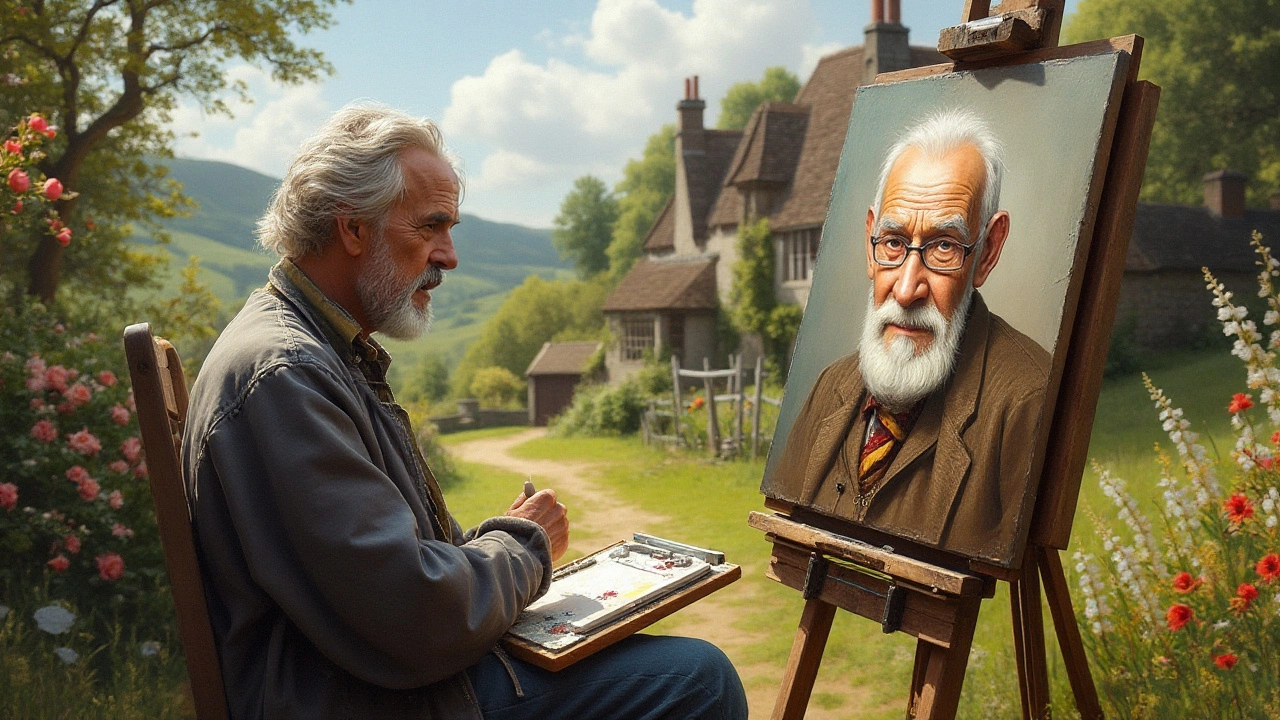
Overcoming Common Challenges
Stepping into the world of portrait art can be as overwhelming as it is rewarding. The path is strewn with hurdles, but each challenge is a stepping stone to mastery. Let's explore some common obstacles and how to triumph over them.
1. Capturing Likeness
The quintessential challenge for any beginner portrait artist is achieving a true likeness. It's often said that capturing a person's essence is more an art than a science. Begin by spending ample time observing your subject. Sketching becomes an invaluable exercise—studies reveal that preliminary sketches enhance understanding of facial proportions and help develop a keen eye for detail. Employ techniques like gridding to maintain accurate proportions.
“Drawing is the honesty of the art. There is no possibility of cheating. It is either good or bad.” — Salvador Dalí
2. Handling Proportions and Anatomy
Mastery of human anatomy is crucial in portrait painting. Common pitfalls include misalignments in facial features and incorrect body proportions. Studying anatomy textbooks and participating in live drawing sessions can dramatically elevate your understanding. Remember, practice is key; the more you practice, the more intuitive these skills become.
3. Choosing the Right Materials
Many beginners feel lost in the sea of available materials. Invest in quality over quantity when it comes to paints and canvases. Lightfastness and opacity are features worth paying attention to, ensuring your work remains vibrant over time. Pigments rich in quality will yield better results, enhancing both the learning process and final artwork.
4. Developing a Unique Style
Finding your own style amidst famous styles of historical greats can feel daunting. The key lies in experimentation and patience. Allow yourself to play with different techniques, mediums, and influences. Consider keeping a journal of reflections and sketches. Over time, patterns will emerge that define your artistic voice.
5. Managing Criticism and Self-Doubt
Art is deeply personal, and exposure to feedback can be nerve-wracking. Embrace criticism as a tool for growth, but also trust your intuition. Remember that self-doubt plagues even the best artists. Counter it by setting realistic goals and celebrating small victories along the way.
By addressing these common challenges early on, you'll not only enhance your technical skills but also build the resilience necessary for a fulfilling career in portrait painting. With relentless curiosity and persistence, there is no limit to what you can achieve in capturing the human essence on canvas.
